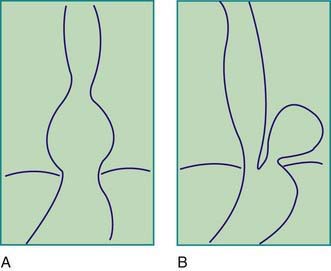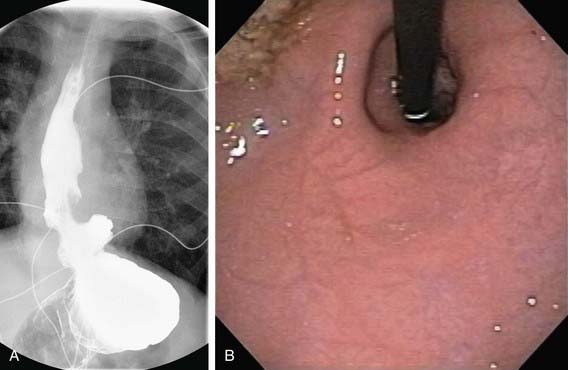Chapter 314 Hiatal Hernia
Herniation of the stomach through the esophageal hiatus can occur as a common sliding hernia (type 1), in which the gastroesophageal junction slides into the thorax, or it can be paraesophageal (type 2), in which a portion of the stomach (usually the fundus) is insinuated next to the esophagus inside the gastroesophageal junction in the hiatus (Figs. 314-1 and 314-2). A combination of sliding and paraesophageal types (type 3) is present in some patients. Sliding hernias are often associated with gastroesophageal reflux, especially in developmentally delayed children. The relationship to hiatal hernias in adults is unclear. Medical treatment is not directed at the hernia but at the gastroesophageal reflux, unless failure of medical therapy prompts correction of the hernia at the time of fundoplication.

Figure 314-1 Types of esophageal hiatal hernia. A, Sliding hiatal hernia, the most common type. B, Paraesophageal hiatal hernia.







